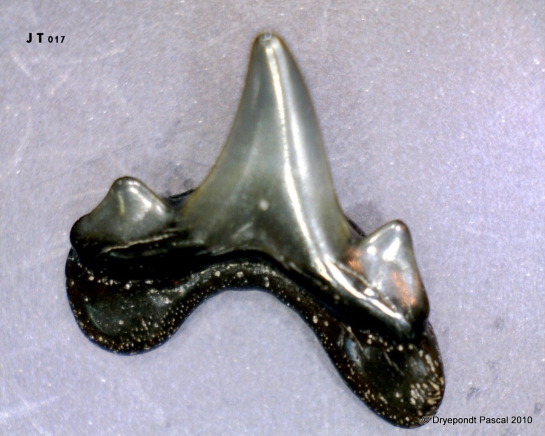Cretalamna - A history of evolution
- strandjutters
- Berichten: 11122
- Lid geworden op: 06 dec 2010, 22:26
- Been thanked: 3 times
- strandjutters
- Berichten: 11122
- Lid geworden op: 06 dec 2010, 22:26
- Been thanked: 3 times
Antw: Cretalamna - A history of evolution
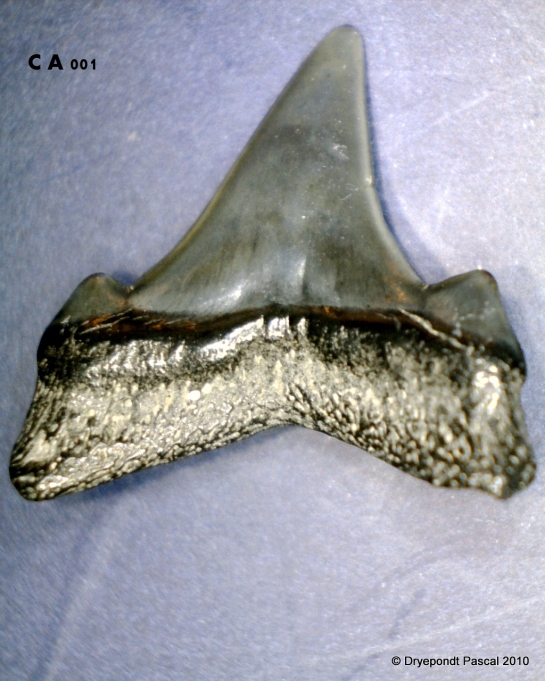
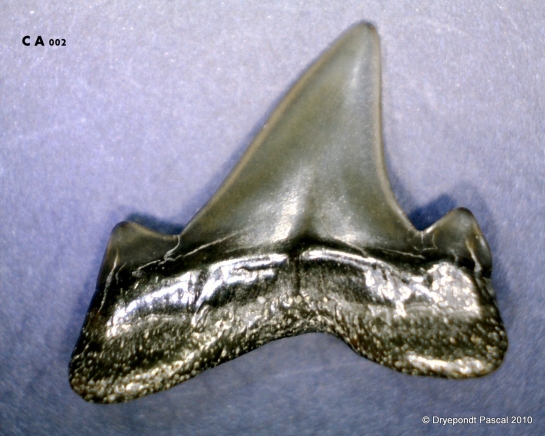
Hallo, het zijn waarschijnlijk deze twee die je bedoelde.Groetjes
strandjutters
Antw: Cretalamna - A history of evolution
Hierbij enkele Cretalamna sp. te aanvulling op dit verhaal, appendiculata komt in veel grotere aantallen voor in het Ypresien van Marokko dan biauriculata/maroccana.
Op foto 3 en 4 brengt 1 tandje mij nu aan het twijfelen door de tekst van Case & Cappetta te lezen, zij spreken over een soort van dubbele laterale bijspitsen waaraan de maroccana/biauriculata te herkennen valt. Dit tandje had ik destijds gedetermineerd als appendiculata vanwege de smallere en dikkere kroon tov biauriculata.
En enkele of dubbele bijspitsen kan onder 1 soort vallen, dus was dit destijds niet aan de orde.
Zou ik nu dit tandje beter onder biauriculata/maroccana kunnen plaatsen? Wellicht, maar toch is de kroon afwijkend tov. appendiculata, en blijft het voor mij even een twijfel geval.
Ook zou ik graag de volgende vragen beantwoord zien:
-Is biauriculata/maroccana een subsoort van appendiculata of van een ander soort?
-Waar en in welk tijdperk vinden we deze afsplitsing terug?
Ik zal nog eens rondneuzen in mijn collectie of ik van andere locaties nog Cretalamna sp. heb liggen, wellicht kan dit nog voor andere aanvullingen zorgen in dit verhaal.
Groeten Ferry
Verzamelaar van fossiele haaientanden van wereldwijde locaties,voornamelijk Plioceen t/m Eoceen.
Ik sta altijd open voor een leuke haaientanden ruil.
Ik sta altijd open voor een leuke haaientanden ruil.
Antw: Cretalamna - A history of evolution
Op de foto's staat Cretolamna ipv. Cretalamna, sorry schrijf/tikfout.
Groeten ferry
Groeten ferry
Verzamelaar van fossiele haaientanden van wereldwijde locaties,voornamelijk Plioceen t/m Eoceen.
Ik sta altijd open voor een leuke haaientanden ruil.
Ik sta altijd open voor een leuke haaientanden ruil.
- sharkteethrene
- Berichten: 2176
- Lid geworden op: 27 okt 2006, 20:23
Antw: Cretalamna - A history of evolution
Ola,
Leuk en interresant topic mannen.
Groetjes,
Rene.
Leuk en interresant topic mannen.
Groetjes,
Rene.
Kennis is relatief, we maken gebruik van wat we heden (denken te) weten.
Morgen is er weer een nieuwe dag,dit met nieuwe vondsten en wellicht andere inzichten!
Morgen is er weer een nieuwe dag,dit met nieuwe vondsten en wellicht andere inzichten!
- Hieronymus
- Berichten: 1597
- Lid geworden op: 19 mei 2005, 21:38
- Contacteer:
Antw: Cretalamna - A history of evolution
Ferry,
Over maroccana: dat is een geldige, aparte soort binnen het genus Cretalamna, dus geen subsoort o.i.d. Ergens is die wellicht wel afgesplitst van Cretalamna appendiculata, aangezien dit momenteel naast maroccana de enige geldige soort is in dit genus én ook een pak langer voorkomt dan maroccana. Aangezien maroccana wordt toegewezen aan het Maastrichtiaan (en dus niet het Ypresiaan zoals je vermeldde) is deze soort zich wellicht in het vroeg Maastrichtiaan of het laat-Campaniaan beginnen ontwikkelen (veronderstel ik).
Over uw tandje: het heeft brede bijspitsen net zoals de "lata" variëteit uit het Maastrichtiaan. Maroccana heeft doorgaans een zeer rechte kroon, of slechts licht distaal gebogen. Bij jouw tand lijkt me, op de kroon afgaande, allebei nog wel een mogelijkheid. Lastig tandje:-).
Bedankt voor de aanvullingen Ferry! Wederom zeer interessant.
Over maroccana: dat is een geldige, aparte soort binnen het genus Cretalamna, dus geen subsoort o.i.d. Ergens is die wellicht wel afgesplitst van Cretalamna appendiculata, aangezien dit momenteel naast maroccana de enige geldige soort is in dit genus én ook een pak langer voorkomt dan maroccana. Aangezien maroccana wordt toegewezen aan het Maastrichtiaan (en dus niet het Ypresiaan zoals je vermeldde) is deze soort zich wellicht in het vroeg Maastrichtiaan of het laat-Campaniaan beginnen ontwikkelen (veronderstel ik).
Over uw tandje: het heeft brede bijspitsen net zoals de "lata" variëteit uit het Maastrichtiaan. Maroccana heeft doorgaans een zeer rechte kroon, of slechts licht distaal gebogen. Bij jouw tand lijkt me, op de kroon afgaande, allebei nog wel een mogelijkheid. Lastig tandje:-).
Bedankt voor de aanvullingen Ferry! Wederom zeer interessant.
Rhaetian Lorraine Region
http://rhaetianlorraine.webs.com
http://rhaetianlorraine.webs.com
Antw: Cretalamna - A history of evolution
Tjaa, inderdaad een lastig tandje!
Ik ga zondag nog eens verder kijken in de collectie voor meer aanvullingen betreffende dit verhaal.
Hierbij wellicht nog een leuke aanvulling over de troebele historie van Serratolamna geschreven door Charlie J. Underwood and Simon F. Mitchell:
The genus Serratolamna was originally erected to include a range of Late
Cretaceous taxa possessing multiple lateral cusplets (Landemaine 1991). This included
several species that are clearly not related to S. serrata, the type species (Case and Cappetta 1997) and should be retained within other genera. It is unclear whether Cretolamna maroccana (Arambourg, 1935), C. caraibaea (Leriche, 1938) and C.
biauriculata (Wanner, 1902) should be included into Serratolamna, although Case and Cappetta (1997) retain C. maroccana and C. biauriculata in Cretolamna, presumably
due to their lack of a distinct root axial groove. Serratolamna serrata has been recorded from many parts of the world (e.g.
Herman 1977), and may be one of the most widely distributed Cretaceous shark taxa.
Despite this wide palaeogeographical range, S. serrata appears to have been a short lived taxon, being restricted to the Maastrichtian. This is unlike the closely related Cretolamna appendiculata (Agassiz, 1843) which ranges from Albian to early Eocene (Cappetta and Case 1999). S. serrata is well known from the Maastrichtian of North America (e.g. Case 1979, Case and Cappetta 1997), Belgium and Holland (e.g. Leriche 1929, Herman 1977), France (e.g. Landemaine 1991), Morocco (e.g. Noubhani and Cappetta 1997), Egypt (Wanner 1902), Angola (Herman 1977) and Brazil (Reboucas and Santos 1956). Where it has been differentiated, these occurrences appear to be restricted to the Upper Maastrichtian. This Upper Maastrichtian age is further reinforced by the absence of S. serrata from some very rich Lower Maastrichtian faunas, such as in Egypt (Cappetta 1991) and Belgium (Herman 1977). Records of this species in Campanian sediments from Egypt (e.g. Priem 1914) and Israel (Raab 1963) are probably due to poor dating of
the sediments; the Israeli assemblage also containing other taxa otherwise only recorded in the Maastrichtian. Other Campanian and earlier records of S. serrata (e.g. Leriche 1902, Welton and Farrish 1993) are probably due to mis-identification of species of Cretolamna (Case and Cappetta 1997). It is therefore evident that the presence of this
species is a good indicator for Maastrichtian, and probably Upper Maastrichtian, age.
Groeten Ferry
[Bewerkt door Ferry op 27-03-2011 om 02:05 NL]
Ik ga zondag nog eens verder kijken in de collectie voor meer aanvullingen betreffende dit verhaal.
Hierbij wellicht nog een leuke aanvulling over de troebele historie van Serratolamna geschreven door Charlie J. Underwood and Simon F. Mitchell:
The genus Serratolamna was originally erected to include a range of Late
Cretaceous taxa possessing multiple lateral cusplets (Landemaine 1991). This included
several species that are clearly not related to S. serrata, the type species (Case and Cappetta 1997) and should be retained within other genera. It is unclear whether Cretolamna maroccana (Arambourg, 1935), C. caraibaea (Leriche, 1938) and C.
biauriculata (Wanner, 1902) should be included into Serratolamna, although Case and Cappetta (1997) retain C. maroccana and C. biauriculata in Cretolamna, presumably
due to their lack of a distinct root axial groove. Serratolamna serrata has been recorded from many parts of the world (e.g.
Herman 1977), and may be one of the most widely distributed Cretaceous shark taxa.
Despite this wide palaeogeographical range, S. serrata appears to have been a short lived taxon, being restricted to the Maastrichtian. This is unlike the closely related Cretolamna appendiculata (Agassiz, 1843) which ranges from Albian to early Eocene (Cappetta and Case 1999). S. serrata is well known from the Maastrichtian of North America (e.g. Case 1979, Case and Cappetta 1997), Belgium and Holland (e.g. Leriche 1929, Herman 1977), France (e.g. Landemaine 1991), Morocco (e.g. Noubhani and Cappetta 1997), Egypt (Wanner 1902), Angola (Herman 1977) and Brazil (Reboucas and Santos 1956). Where it has been differentiated, these occurrences appear to be restricted to the Upper Maastrichtian. This Upper Maastrichtian age is further reinforced by the absence of S. serrata from some very rich Lower Maastrichtian faunas, such as in Egypt (Cappetta 1991) and Belgium (Herman 1977). Records of this species in Campanian sediments from Egypt (e.g. Priem 1914) and Israel (Raab 1963) are probably due to poor dating of
the sediments; the Israeli assemblage also containing other taxa otherwise only recorded in the Maastrichtian. Other Campanian and earlier records of S. serrata (e.g. Leriche 1902, Welton and Farrish 1993) are probably due to mis-identification of species of Cretolamna (Case and Cappetta 1997). It is therefore evident that the presence of this
species is a good indicator for Maastrichtian, and probably Upper Maastrichtian, age.
Groeten Ferry
[Bewerkt door Ferry op 27-03-2011 om 02:05 NL]
Verzamelaar van fossiele haaientanden van wereldwijde locaties,voornamelijk Plioceen t/m Eoceen.
Ik sta altijd open voor een leuke haaientanden ruil.
Ik sta altijd open voor een leuke haaientanden ruil.
Antw: Cretalamna - A history of evolution
Hey
Kijk eens naar deze Cretalamna appendiculata uit het Limburgs Krijt. komt wel eens vaker voor!
gr
- Hieronymus
- Berichten: 1597
- Lid geworden op: 19 mei 2005, 21:38
- Contacteer:
Antw: Cretalamna - A history of evolution
Hoi Math, de bijspits die zowat alle kanten opgaat en zich soms splitst of andere rare dingen doet is inderdaad een van de kenmerken van de variëteit "lata" onder Cretalamna appencidulata. Knap tandje, en een mooi voorbeeld van de variabiliteit binnen dit genus.
[Bewerkt door Hieronymus op 28-03-2011 om 12:28 NL]
[Bewerkt door Hieronymus op 28-03-2011 om 12:28 NL]
Rhaetian Lorraine Region
http://rhaetianlorraine.webs.com
http://rhaetianlorraine.webs.com
Antw: Cretalamna - A history of evolution
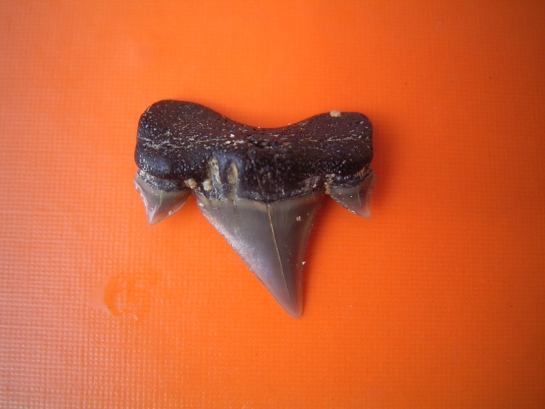
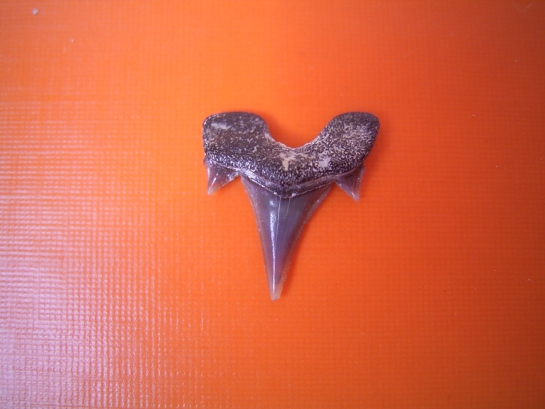
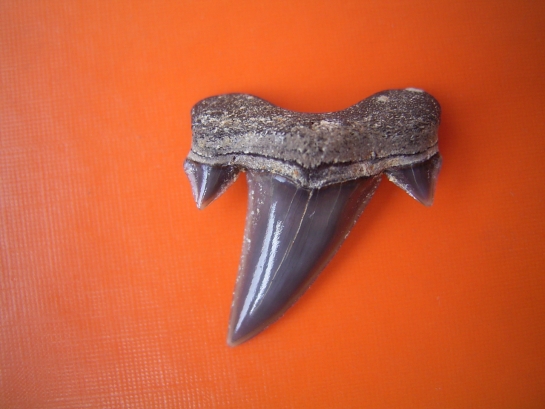
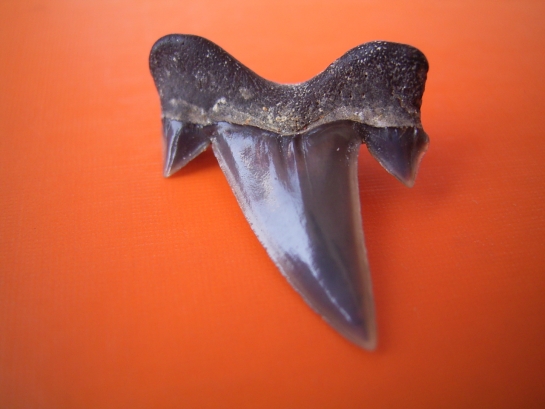
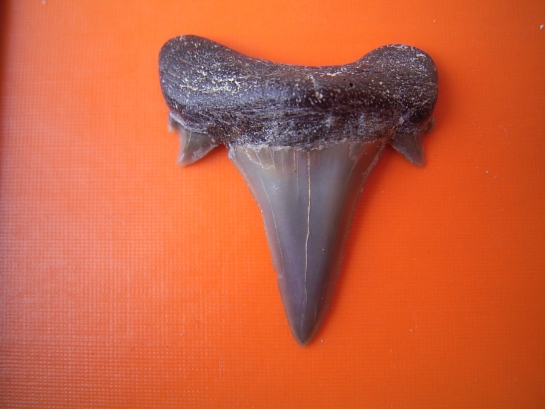
Hey
Hier nog enkele Cretalamna appendiculata var.pachirhyza uit het Paleoceen van Limburg
gr Math

